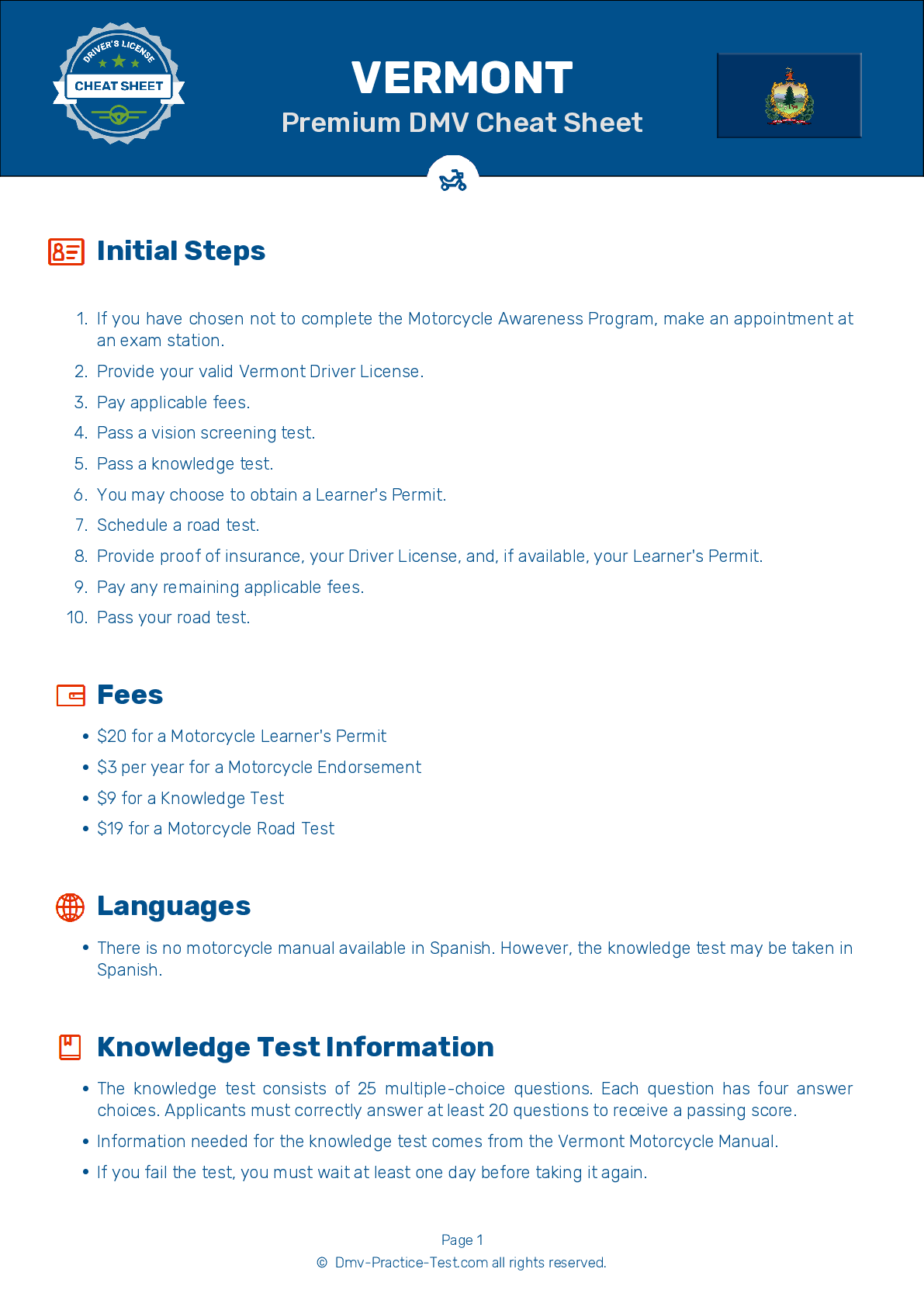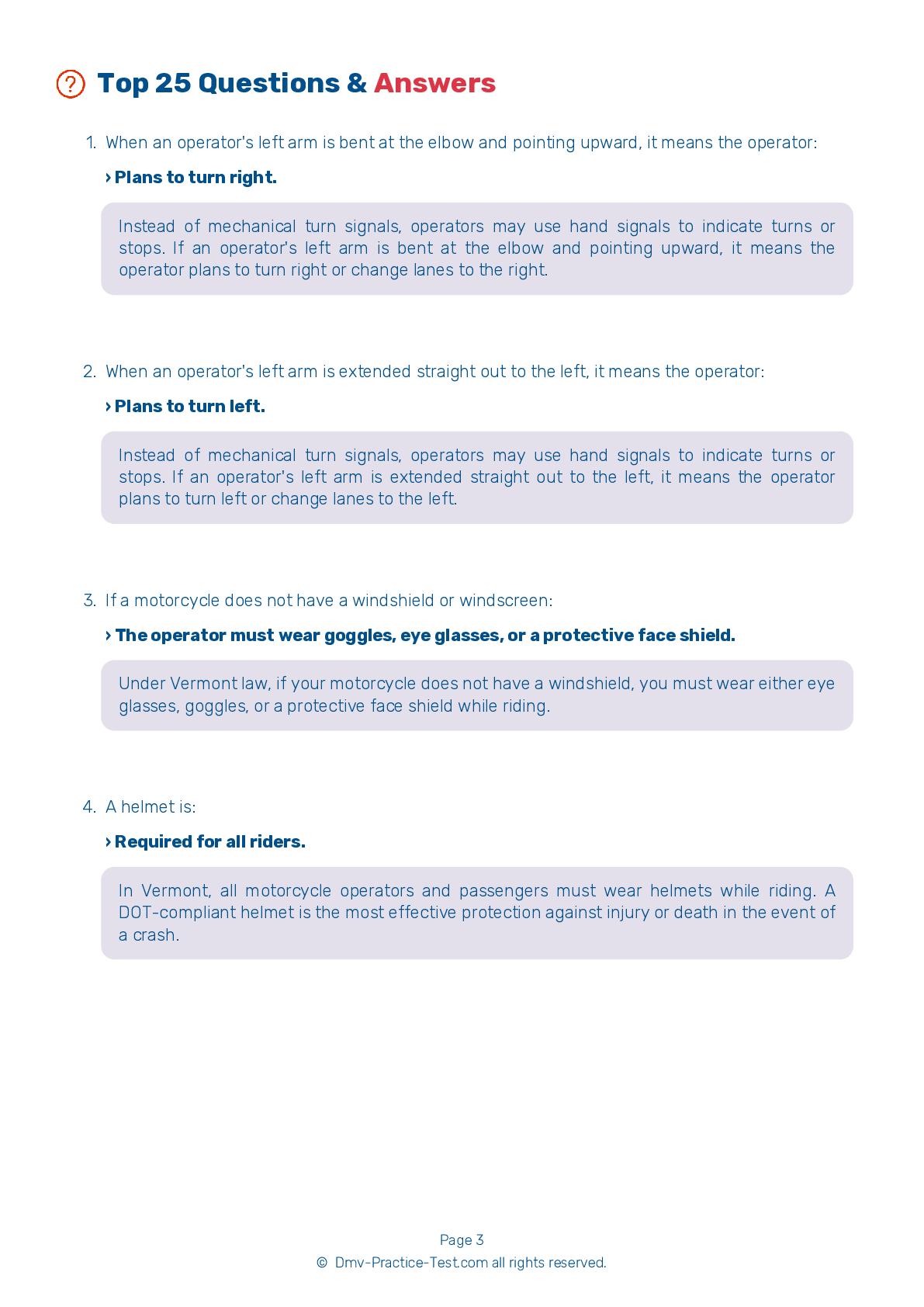Motorcycle Test | License VT 2025 | FREE Online Practice! #12 Page 3 of 4
Take this FREE motorcycle test (license in VT 2025) to check your knowledge of the road rules. To improve your results, download a motorcycle handbook online, study theory, and practice for free on our website. Still worried about how to get a motorcycle license in Vermont in 2025? Check our website for more sample tests, train as much as possible, and boost your grades!
13 . Before riding, a motorcycle operator should check the clutch. A properly working clutch should feel:
Check your clutch and throttle before riding your motorcycle. The throttle should snap back when you let go and the clutch should feel tight and smooth.
14 . When you are riding on a bridge grating, you should:
Crossing rain grooves or bridge gratings may cause your motorcycle to move in a weaving motion. This is usually not dangerous, so simply relax and proceed across the surface at a steady speed. Trying to ride at an angle to compensate for the weave is dangerous because it forces you to zigzag to stay in your lane.
15 . A motorcyclist should attempt to avoid obstacles on the roadway. If avoiding an obstacle is not possible, the motorcyclist should:
If you are unable to avoid an obstacle and must instead ride over it, slow down and approach the obstacle at as close to a 90-degree angle as possible.
16 . When riding in a group, motorcyclists:
When riding in a group, you should maintain close ranks but still keep an adequate space cushion around each rider.
17 . For routine braking:
Always use both brakes every time that you slow or stop.
18 . In general, when parked on the road, a motorcycle should be:
If parking in a parallel parking space next to a curb, it is generally best to position the motorcycle at an angle with the rear wheel to the curb. It should be noted that some cities have ordinances that require motorcycles to be parked parallel to the curb.
See the exact questions that will be on the 2025 Vermont DMV exam.
99.2% of people who use the cheat sheet pass the FIRST TIME
Jeneen was tired of paying $5/gallon. She got herself a scooter that required the motorcycle license. She studyed the motorcycle test cheat sheet and passed her test the next day!
Christopher tells us how he knew nothing prior to obtaining the motorcycle study guide, and he only got one question wrong because he clicked on the wrong answer by mistake.



